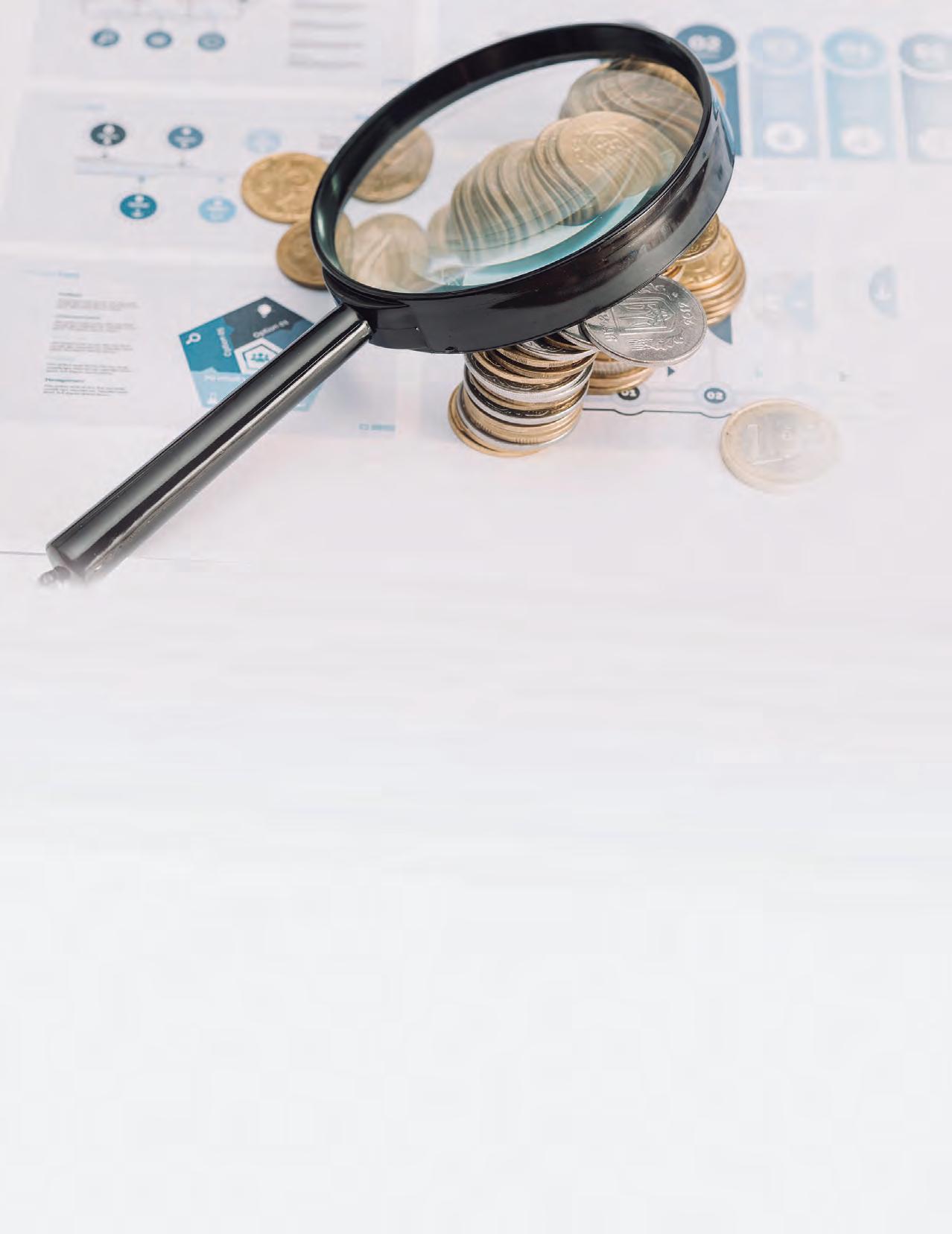
6 minute read
Public Funds
Public Funds: through Evaluation and Social Comptrollership
By Azucena Mendez Garcia MA and PhD in International Economy and Development.
Advertisement
Complutense University of Madrid, Madrid, Spain.
Based on evaluation and accountability as the two final phases of the budgetary cycle 1 of public spending, there are a number of instruments that contribute to the efficiency, effectiveness, economy, legality, trustworthiness and transparency of public resource management.
The public entities and civil servants in charge of expenditures have obligations that include both evaluation and accountability within their budgeted programs, projects and/or actions regarding public policy. To this end, the present article aims to inform the reader about two specific instruments: the
Evaluations of Public Administration Budgetary Programs and the Actions Regarding Social Comptrollership within Public Budgetary Pro
grams for Social Development. The latter is more specifically a part of the final phase of accountability within the budgetary cycle. Though both instruments have evolved in similar, and sometimes very specific ways --such as with citizen participation during Actions Regarding Public Comptrollership, or control and follow-up to public policy during the Evaluations of Budgetary Programs. The common denominator is having established, within the framework of the National Democratic Planning System, and legally constituted by reforms to the Political Constitution of the United States of Mexico, the first Planning Law, as of 1983. However, it is important to plant the following question: How specifically and practically to these instruments contribute to citizen participation? On one hand, the Evaluation of Public Policy and Programs is focused on using external expertise to undertake a systematic and objective analysis to determine the pertinence and reach, as well as the efficiency, effectiveness and quality of these. Above all, the aim is to contribute to improving the application of actions within public policy to create and enhance public value. On the other hand, social comptrollership, applied exclusively to social development policy and programs by means of primary vigilance of program beneficiaries and/or policies from with the committees of social comptrollership, contribute to the follow-up and supervision of program reach and action, as well as the correct application of assigned resources. It is relevant to mention that mechanisms for reporting corruption are at beneficiaries’ disposal at all times. When reviewing events, development and the practical application of the Evaluation of Budgetary Programs we can observe a precedent in the larger operation of the Actions Regarding Social Comptrollership. Nevertheless, both tools could be coordinated to contribute to the outcome of strategies that could provide better planning, programming and budgeting exercises within public policy and programs, as well as for all the programs configured around the use of public funds. The two instruments are alternates for each other and in terms of information sharing, are both obligated to be transparent in their actions via their corresponding platforms. Readers can review the final product of the Budgetary Evaluations Program on the page www. transparenciapresupuestaria.gob.mx/ . There are number of functions aligned with this practice resulting from the Actions in Social Comptrollership that also combat corruption, including the initiative called Permanent Comptroller Commission Mexico: .www.comisioncontralores.gob.mx/ that promotes the use of best practices for combating corruptions through the National Social Comptrollership Award. Informing and sharing information through accountability instruments for the Budgetary Cycle empowers citizens to stay informed and invites their participation in public work as an act of civil and social responsibility.
ACCOUNTABILITY PLANNING PROGRAMMING BUDGETING
EXERCISE AND CONTROL TRACING EVALUATION
January to December April following year January to April May to September September to November January to December April, July, October and January

Pictorial Exhibition
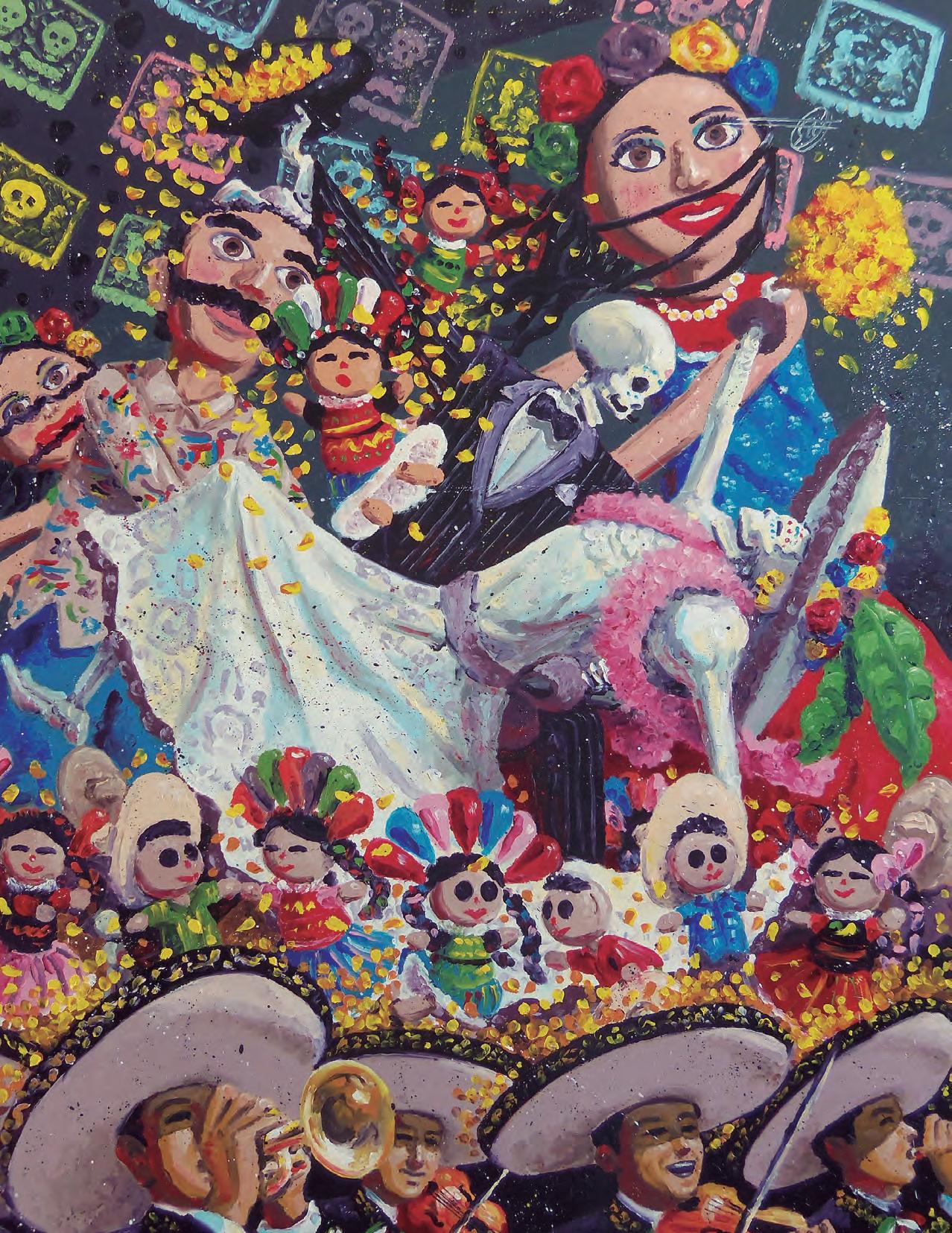
Mexican-ness Decontextualized
By Ricardo Cruz Fuentes
BA in Cultural Administration / Visual Artist
Mexico has an ample cultural identity, primarily derived from its Pre-Columbian history and the cultural mix resulting from Spanish colonization. Religious beliefs, clothing, food, architecture, traditions, festivities and even morphologies merged to create a new path of identity that would lead to the term “Mexicanidad”-- loosely translated at “Mexican-ness.”
Mexican-ness is linked to understanding the strong and sometimes inexplicable cultural identity shared by Mexicans. Experiencing a sense of belonging to this culture, even if one’s national legal condition is distinct, is tied to Mexico’s arts and artists where identity signifiers flow in perpetuity. A sense of belonging is shared among individuals through Mexico’s traditions, artwork and other cultural representations.
The exhibition “Mexican-ness Decontextualized” is a pictorial proposal aimed at contributing to the rediscovery of Mexican-ness, and enlivening the sense of identity and belonging in its viewers. Likewise, it aims to reinforce knowledge around Mexican culture through representative
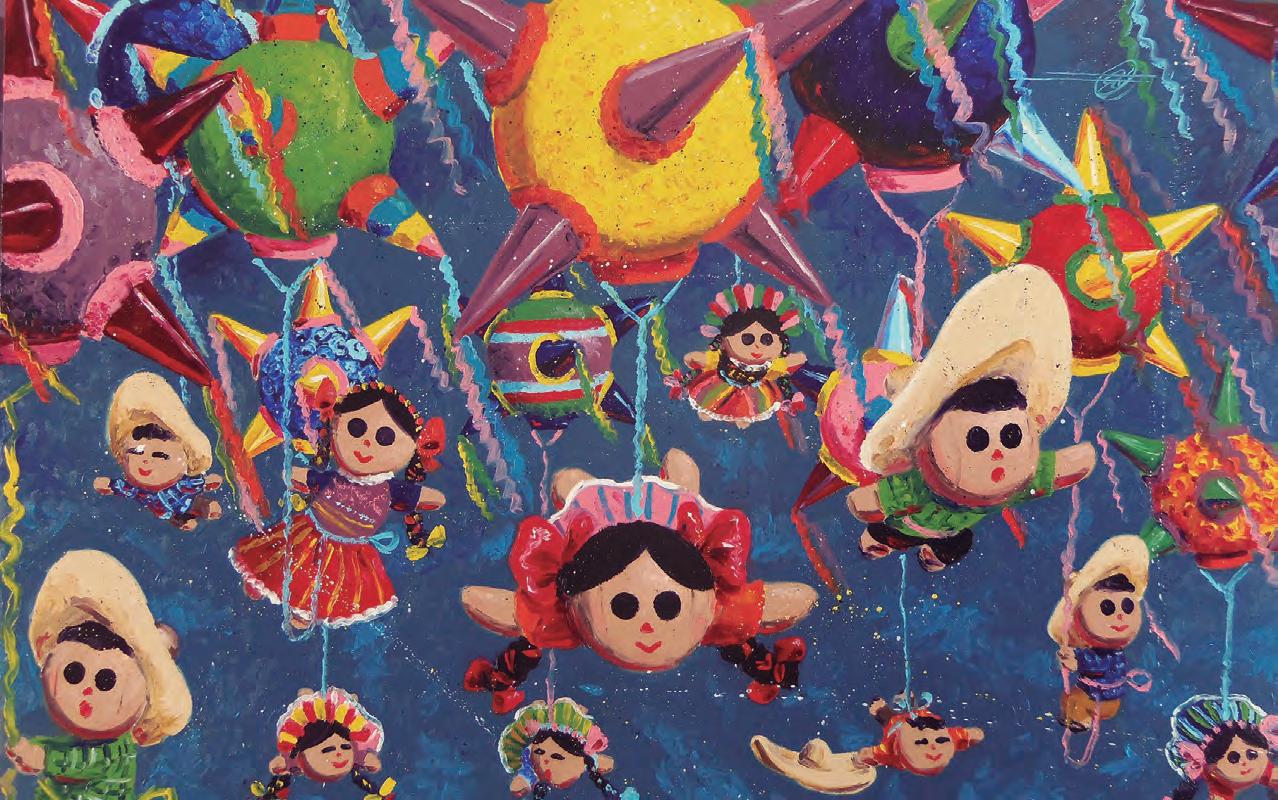
images like the Dancers, China Poblanas, Catrinas, Mazahua Dolls, Alebrijes (colorful monsters), Tenangos (colorful embroidery) etc.. Peculiarly contemplated from an external context and perspective different from the one to which we are accustomed.
The artwork included in the exhibit is accompanied by QR codes with links to short, public videos that explain a little about each representative character in its truest context. In this way we can learn about its origin, symbolism, representation, and festival to which it is linked and the geographic location in which it originated, among other facts. Each works is also accompanied by a short text about the history of the piece from a more subjective perspective that deepens understandings of the scene expressed by the artist. These texts, written by Nohemi Lopez Rivera (Lori) and Rosabla Rios Solano, add flavor to the viewers’ experiences as they peruse the exhibit.
This pictorial exhibit presents Mexican-ness in an unusual context that meshes well with the artistic technique, which includes finger (rather than
brush) painting with a unique result for each piece but unifying them through joy and humor. In the exhibit, different representative images seem to socialize in a fantasy-filled world, where Mazahua dolls come to life and share moments with Catrinas, Dancers, and Chinelos (carnival figures). Where Tenangos are no longer embroidery but rather animals that join with Alebrijes, axolotls and xoloitzcuintles in colorful menageries come to life in this fantasy world.
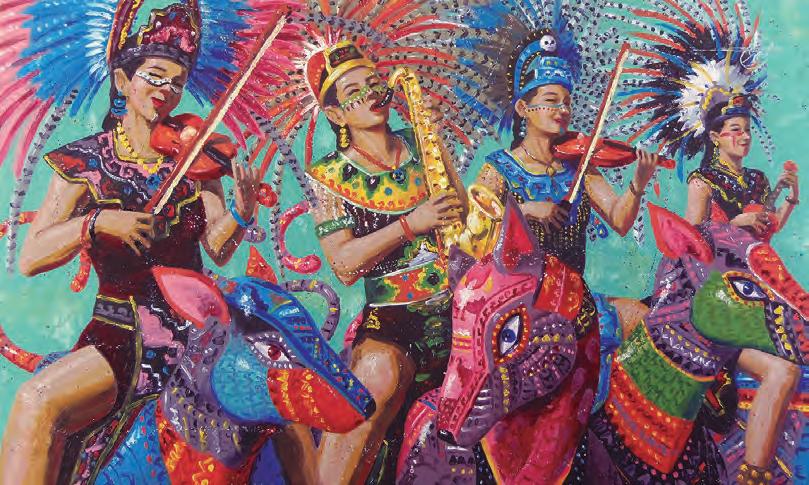
Though Mexican-ness is the central theme of the exhibit, human development and growth comprise the overriding message. The narrative is presented along a lifeline, from infancy to death. The thematic-chronological overly posed by the exhibit allows one to visualize a progressive line of human development and maturation both for individuals and as a community.
In this way the pluri-cultural Mexican journey of this exhibit evokes not only our roots but also our life stories; what we were, what we are, and what some day we will be.
Themes are more easily understood thanks to the exhibit’s introductory text presented at the beginning of the tour. It was written by Maestro Fernando Padilla who, with his ample experience in the art world, is able to submerge the spectator in the themes as well as in the dynamics of the show. The exhibit “Mexican-ness Decontextualized” is now itinerant, having been shown at the Museum of the National Popular Autonomous University of Puebla State, at the Puebla Cultural Bureau “Professor Pedro Angel Palou Perez” and the Museum at the “Big House” of the Hidalgo State Autonomous University and it will continue to travel through a variety of museums in Mexico during the this and the following year.

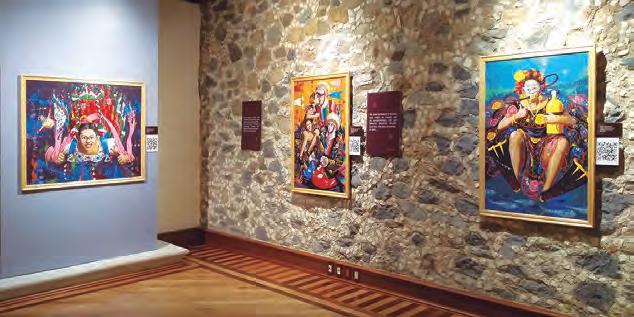
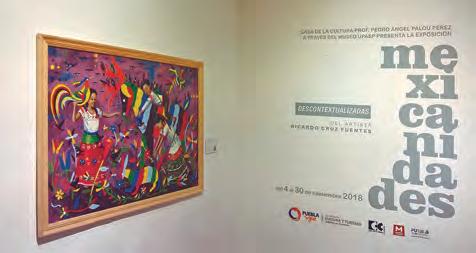
Keep an eye out for it at: The Museum of Arts and Sciences at the Autonomous University of Carmen (Campeche), the Museum of the City of Cuernavaca (Morelos), The Guillermo Ceniceros Museum of Modern Art (Durango) among others.

Click on this icon and you can see multimedia content in relation to this article.




